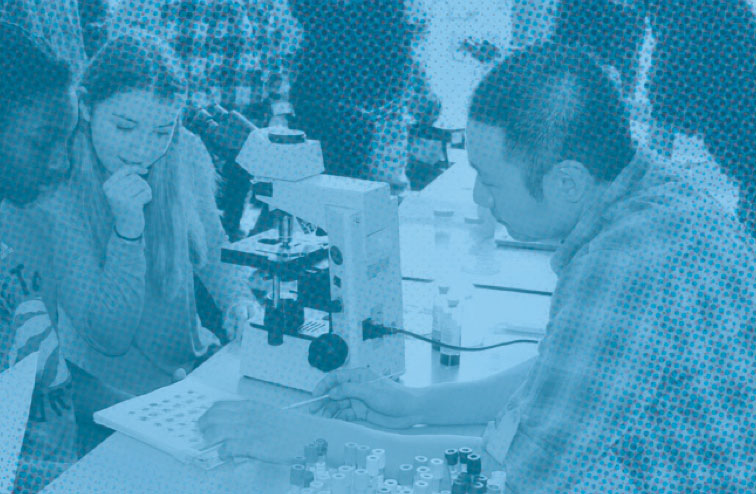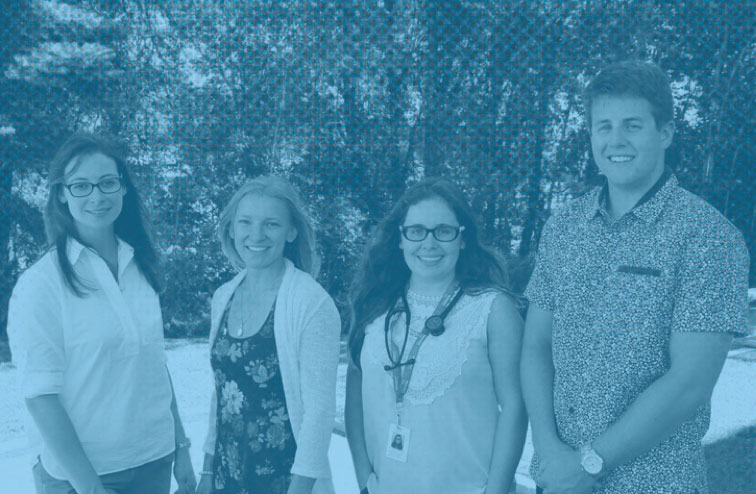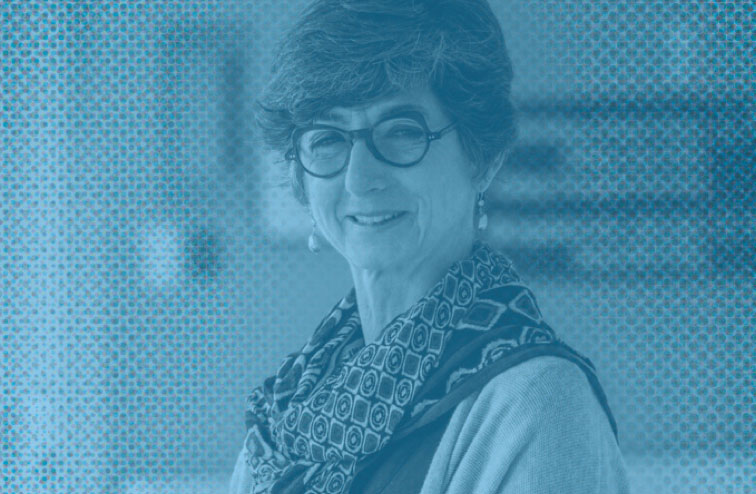Pathways — the UBC Faculty of Medicine’s digital magazine — shares stories about learning, discovery and innovation that are making a difference in B.C. communities and around the world. Discover the impact of our global-leading health research and education.
Amid the forces of technological innovation, shifting demographics, diverse geography and complex socio-economic conditions, how do we ensure that all British Columbians have equitable access to the care they need?
At the University of British Columbia (UBC), the province’s only faculty of medicine, this question lies at the root of all that we do — from our people to our programs, from our research to our partnerships.
We call it our contract with society.
Over the last decade, we’ve embarked on new pathways, motivated by our commitment to social accountability. But what exactly does that mean for a faculty of medicine?
In the first issue of Pathways — our new online magazine — we hope to show you this accountability in action.
For medical student Ellie Parton, it means cultural accountability — the opportunity for a young woman from the Kwakwaka’wakw First Nation to become a doctor.
For UBC researchers like Drs. Silke Appel-Cresswell and Martin McKeown, it means accountability for transforming our health systems to improve care.
At the UBC Faculty of Medicine, it also means economic accountability, translating investment into impact, and working with our partners to solve our most urgent challenges and seize our most important opportunities.
Our path together begins here.
Highlights
During the last year, our faculty, staff and students have hit the road to reach the next generation of health professionals, established new programs in rural communities, gotten dirty and healthier, tackled chronic disease with the help of patients, and advanced genetically-informed medicine to help kids with epilepsy. Discover their stories:
“Does the baby get scratched on its way out?” Curious kids at Chief Matthews School on Haida Gwaii had a lot of interesting questions for a group of health care students presenting with the Healthcare Travelling Roadshow.
Each spring, a diverse group of students - ranging from medicine to midwifery to speech language pathology - visit rural
communities across Northern and Interior B.C., as a way to inspire young minds to consider a future career in health care.
“During the roadshow, health care students lead a series of presentations and interactive learning experiences,” says Dr. Sean Maurice, senior lab instructor, Northern Medical Program (NMP) and founder of the annual event. “High school students are given an opportunity to handle different medical equipment and learn everything from how to read an X-ray to how to take blood pressure or intubate.”
“These sessions are important because they provide a space for students to discover and explore health care careers,” notes Simran Lehal, a second-year NMP medical student and 2016 Roadshow participant. “For me, guiding students in using a stethoscope or checking reflexes for the first time was a really rewarding experience.”
Since its inception, the roadshow has connected with more than 5,000 youth in 22 communities throughout B.C.
“Coming from a small school and a small northern area, it would be really difficult to get our kids to experience something like this otherwise,” said Bernadette Marie, principal of George Mercer Dawson Secondary in Masset, B.C. “Getting the kids immersed in this type of activity is invaluable.”
--
The program is supported by the University of British Columbia Faculty of Medicine and University of Northern British Columbia. It is funded through the Northern Medical Programs Trust, Rural Education Action Plan and Interior Health.

From a young age, Travis Thompson took an acute interest in family medicine — but it wasn’t just an affinity for anatomy and physiology that drew him to the field, rather the prospect of helping others, particularly those living in underserviced areas of the province.
“When you come from a small town, you have a unique understanding of the needs felt by a community,” he says.
Last summer, Dr. Thompson, a recent graduate of UBC’s Southern Medical Program in Kelowna, continued his path to becoming a licensed family physician in the place he calls home: BC’s South Okanagan, the newest training ground for family medicine residents.
The launch of the new South Okanagan family medicine residency site is part of a combined effort to expand medical training opportunities across the province to help meet the health care needs of families in B.C.
Over the past two decades, family medicine residency training in B.C. has undergone significant growth — expanding in both size and reach. Between 2003 and 2016, UBC’s Family Medicine Residency Program — now the largest in Canada — more than tripled the number entry-level positions from 54 to 169.
In the case of Dr. Thompson, his hope is to stay true to his small-town roots after completing training next spring.
“I really enjoy the broad spectrum of practice available to family physicians working in smaller communities,” he says. “I’m passionate about doing my part to help underserviced communities, and I think being a smaller centre will help me to become a very competent rural doctor.”

It’s been a mantra for generations - cleanliness is next to godliness. Kids are urged to wash up before dinner and a bottle of hand sanitizer in the backpack is de rigueur for parents.
But could all this hygiene actually be harming our children?
UBC microbiologists Brett Finlay and Marie-Claire Arrieta are encouraging a new way of thinking with their book, Let Them Eat Dirt, which outlines the latest research into the role bacteria play in growing bodies.
“Bacteria play many roles in health and disease, starting in utero,” said co-author Dr. Finlay. “And we are seeing that a lack of good bacteria has led to a rise in allergies, asthma, as well as obesity, diabetes and other chronic conditions.”
The problem Dr. Finlay says, is that we’re making our environments so clean that our kids aren’t being exposed to enough healthy bugs – or microbes that help them build stronger immune systems – which are typically found in dirt.
Dr. Finlay’s advice?
“Don’t wash their hands every few minutes. Let them play outside. Get a dog. Avoid unnecessary antibiotics. Take probiotics for certain things,” he recommends. “And most importantly, eat a diet that encourages microbes – this means fiber, complex carbohydrates, nuts and fermented food, not white sugar and flour.”

Chronic Kidney Disease (CKD) affects one in 10 Canadians. Despite its prevalence little progress has been made in the way we care for people with less advanced forms – the people who don’t need dialysis but who are still weakened by the disease.
But that is expected to change.
Last year, a team from British Columbia embarked on Canada’s largest effort to improve kidney disease care by partnering-up with a different kind of expert – their patients.
“Patients are at the core of this unique program,” said Adeera Levin, Head of the Division of Nephrology at UBC and co-leader of the Canadians Seeking Solutions and Innovations to Overcome Chronic Kidney Disease (Can-SOLVE CKD) network. “The patients asked the questions and helped us to design the way the study looks, and they will continue to help us as the project evolves.”
With a goal set for changing patient outcomes within five years, the team is fighting the disease on several fronts including examining new drug treatments, exploring new ways of delivering care and testing whether stem cells can be used to improve kidney function.
“The project holds so much potential for improvement for patients – and can be a model for how we approach other complex chronic diseases,” said Dr. Levin.
The $40-million initiative is supported by the Canadian Institutes of Health Research through the Strategy for Patient-Oriented Research, and more than 30 funding partners, including the Kidney Foundation of Canada and the Canadian Society of Nephrology.

Over 18,000 Canadian children are diagnosed with unexplained epilepsy each year - increasing their risk of developing intellectual impairment, autism or psychiatric disorders.
Genomics is changing the tide, enabling scientists to find genetic mutations in patients faster than ever.
“We saw a 4-year-old boy with poorly controlled seizures since infancy,” said Mary Connolly, Director of the Epilepsy Program at BC Children’s Hospital. “Using whole-exome sequencing (WES), we found the cause and changed his medication.”
“He has been seizure free for the past year.”
In their ongoing study, Dr. Connolly, also a Clinical Professor and Head of the UBC Division of Pediatric Neurology, Matthew Farrer, Professor in Medical Genetics and Director of the Centre for Applied Neurogenetics and Michelle Demos, Clinical Assistant Professor in the Department of Pediatrics, are using WES to pinpoint epilepsy genes in young children with unexplained seizures.
“We have worked with 160 families and found the precise cause of epilepsy in over 30 per cent,” said Dr. Farrer. “And in 33 per cent of those patients, understanding the cause led to a change in treatment.”
Dr. Farrer believes the same strategy will likely revolutionize the diagnosis and treatment of other complex and chronic diseases.
“Genetically-informed medicine has the potential to predict and prevent diseases. It is especially useful in brain disorders where diagnosis and management is so challenging,” he said.

Never miss the latest edition of Pathways.
Sign Up NowGet Connected
Sign up to stay connected and receive each issue.
We’ll send a confirmation email. Please click the link to activate your subscription.